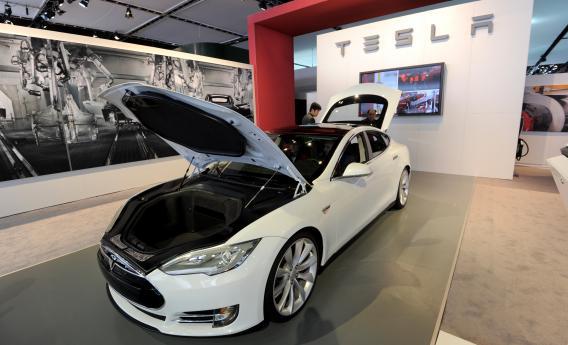Ten years ago, Tesla set out to prove that the future of cars was electric. For its first trick, it built the Roadster, a sleek and blazingly fast sports car that showed electric cars could be high-performance cars. With only two seats and a base price of $109,000, the Roadster was never meant to be a big seller. Production was capped at 2,500, and ended in the United States last year. But it succeeded in its mission of making electric cars cool again.
Now comes the real test: Building a car that ordinary people will actually buy. This week, Tesla will begin shipping its second model, a luxury sedan called the Model S. Built by Tesla at the former NUMMI plant in Fremont, Calif., the Model S theoretically offers all the features of a mid-range BMW or Lexus. And with an advertised price of $49,900, it’s theoretically affordable to non-millionaires, especially when you consider the savings on gas. Has the era of the affordable electric car arrived?
Not quite, unfortunately. It’s when you start getting into the practicalities of this practical luxury sedan that it starts to look either a little less practical or a little less luxurious.
For one thing, the base Model S will actually cost $57,400. The lower figure is the net cost after a $7,500 tax credit. But the bigger hitch is that you can’t actually buy it yet at that price. The first 1,000 Model S’s will be designated “limited edition” and sell for upwards of $95,000 before the tax credit. For that price premium, you’ll get some nice specs: an 85 kWh battery with a 300-mile range, and a snappy 0-60 time of 5.6 seconds (or 4.4 seconds for the top-of-the-line version, which will cost six figures). Those numbers—300 miles and 5.6 seconds—are the ones that Tesla highlights on its website.
To buy one for under $60,000, though, you’ll have to wait until winter. And, in what feels a bit like a bait and switch, the cheaper models will have less power and a much more limited range than the first ones off the line.
The lowest-priced version will have a 40 KwH battery, with an advertised range of 160 miles if you keep the speedometer pegged to 55. Speed up or slow down, as drivers are wont to do, and the range will likely fall significantly. Just how significantly, we don’t know: Tesla hasn’t let any reviewers drive the car for more than 10 minutes. (A company rep tells me that will change Friday.)
The range should still be sufficient to keep you from getting stranded on your daily commute, but you probably wouldn’t want to risk a road trip. So if you want to take the family to the lake for the weekend, you’ll probably need to use your other luxury sedan.
Tesla’s solution to the road trip problem—a planned network of “supercharger” stations that can replenish a battery in just half an hour—will only be available for the higher-end models.
To be fair, Tesla CEO Elon Musk never claimed that the Model S would be cheap. He has long planned on using it as an intermediate step between the exclusive Roadster and a third, as-yet-unnamed model that will truly be for the masses. A company spokesperson informs me the Generation 3 models probably won’t appear until at least 2015.
All this isn’t to say that you shouldn’t buy a Model S if you’ve got the money. By all accounts, it’s a sleek and attractively designed car, and it seems like a serious step up from the other all-electric on the market. Whereas the Model S was built as an electric car from the ground up, Nissan’s slow-selling LEAF, at $35,000, is basically a spiffed-up, electrified Nissan Versa at three times the price. (Its range has been rated at just 73 miles by the EPA.)
Of course, if you’re trading in a gas-guzzler for either car, you’ll be doing a lot of good for the environment. But rather than proving that the era of the electric car is at hand, the Model S shows just how much work remains to be done.
